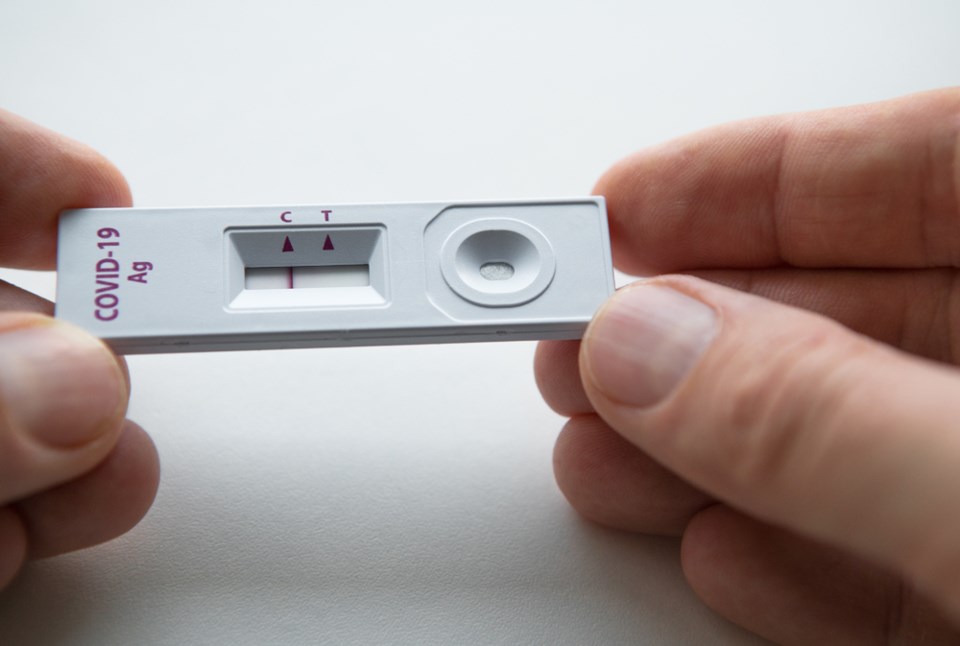B.C.’s K-12 and post-secondary students will soon have rapid antigen test kits in their hands – and members of the general public will follow.
Health Minister Adrian Dix outlined the province’s plans for distribution of rapid antigen tests (RATs) during B.C.’s Feb. 15 COVID-19 briefing.
Dix said the province has a current inventory of just over 8 million tests, of which 7.5 million are suitable for self-administered use. Another 2.8 million are on their way to B.C., and an additional 9.9 million are scheduled to arrive over the weeks to come.
Of those already arrived or in transit, more than 5.9 million are earmarked for education: 3.8 million for the kindergarten-to-Grade 12 system and 2.1 million for post-secondary.
“Students will be offered in the coming weeks the opportunity to take home one five-test kit for their and their family’s future use if they were to become symptomatic,” Dix said.
The B.C. Ministry of Education previously announced a four-phase rollout for those tests, with the first batch earmarked for school districts in remote and rural areas, followed by the rest of the districts within the Northern and Interior health authorities.
The third phase will see tests distributed to all elementary school students in the province, followed by secondary school students in Phase 4.
When will B.C. residents get access to rapid tests?
Assuming the delivery of the 2.8 million tests scheduled to arrive this week, Dix said the province will start distributing test kits to citizens in the broader community.
That rollout will start with seniors, in keeping with B.C.’s focus on higher-risk individuals, and will expand to the broader population as more inventory arrives.
“Increased test availability means that more members of the general population will be able to access tests to use to understand their own symptoms and illness and to take action to limit transmission to their friends, families and work, including those at higher risk,” Dix said.
The province is expected to provide more details next week.
Follow Julie MacLellan on Twitter @juliemaclellan.
Email Julie, [email protected].



.jpg;w=120;h=80;mode=crop)
